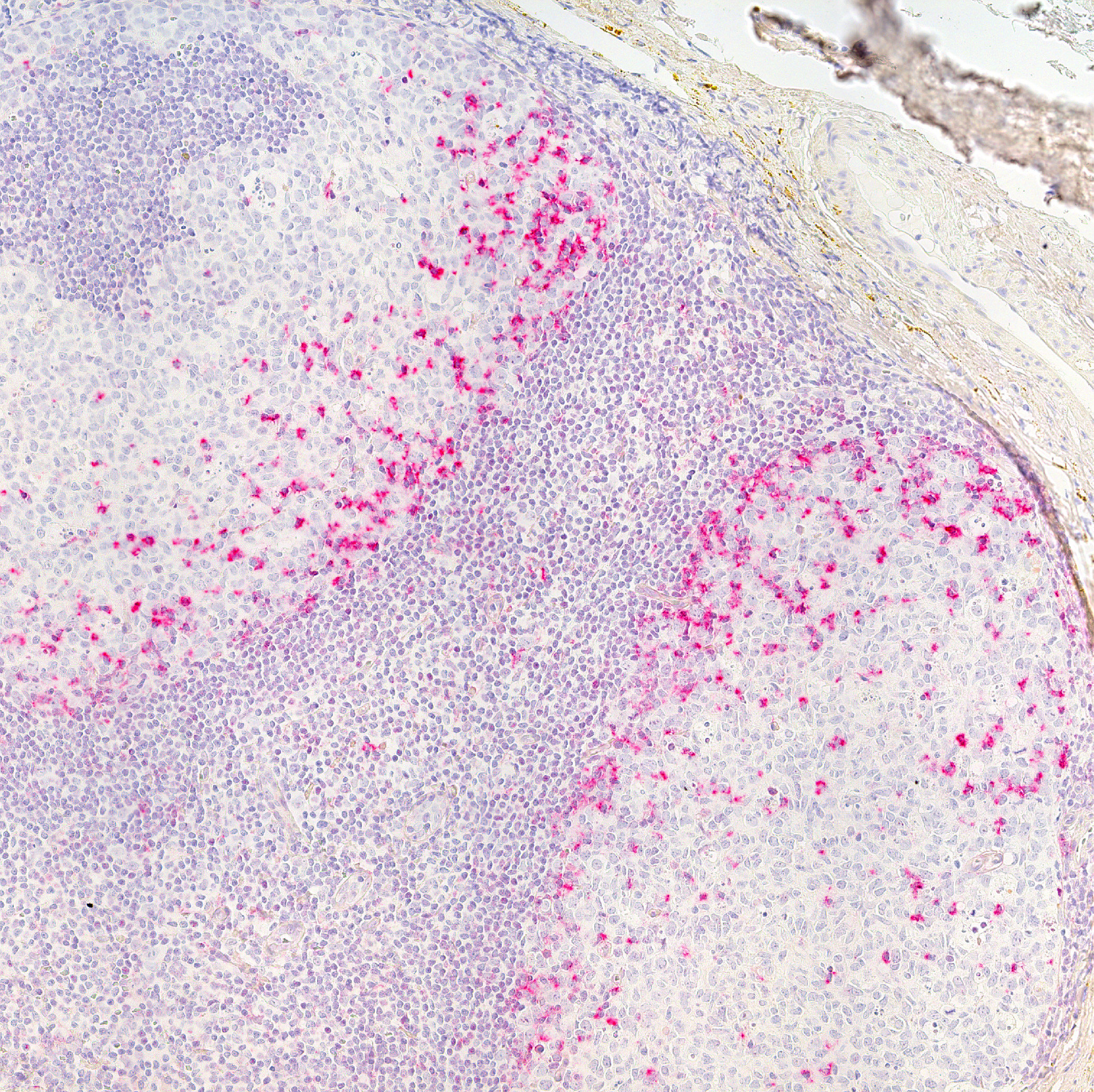Description
The Naveni pY PD1 AP is an in situ proximity ligation assay kit for the chromogenic detection of phosphorylated PD1. Contrary to traditional immunohistochemistry, the kit gives a high signal-to-noise ratio and has outstanding specificity. The kit has been validated on FFPE tissue samples. For research use only. Not for use in diagnostic procedures.
The kit is based on our Naveni® Proximity Ligation Technology, with two Navenibodies conjugated to proprietary oligo arms. The technology ensures specific and sensitive detection. The Navenibodies in the Naveni pY PD1 AP kits target two epitopes on the phosphorylated PD1. One Navenibody target the PD1 protein, and the other Navenibody interacts with phosphorylated tyrosine residues. Probes in close proximity will give a strong and distinct signal, creating a specific and sensitive detection method for phosphorylated PD1.
Product code: NPT.PD1.AP.100
Included in the kit:
- Navenibody targeting human PD1 protein, based on clone D4W2J XP® mAb CST
- Navenibody targeting phosphorylated tyrosine residues, based on clone P-Tyr-100 mAb CST
- AP substrate, red precipitating reaction product
- Buffers for blocking and dilutions and all detection reagents
- The Navenibody solution has a working volume of 4000µl (sufficient for approx. 100 reactions)
Not included in the kit:
- VectaMount® Express Mounting Medium (H-5700-60) from Vector Laboratories (required for optimal signal intensity).
- Isopropanol 99,5 %.
- Endogenous horseradish peroxidase quenching solution.
- TBS and TBS-T – Tris-buffered saline and Tris-buffered saline supplemented with 0,05% Tween, respectively
Product is also available with HRP substrate.
User instructions
Elucidate the activation of PD1 in tissue
PD1 PD-L1 signaling has with immune checkpoint inhibitors proven to be significant in cancer progression and treatment. Despite the recent success of immune checkpoint inhibitors, many patients do not benefit from these therapies, and predictive biomarkers improving patient stratification are needed. PD-L1 IHC is commonly used as a biomarker, but the correlation between PD-L1 expression levels and PD1/PD-L1 interaction is not always linear. PD1 activation is an important step in the signaling pathway, yet phosphorylation of PD1 in situ is not well studied, mainly due to lack of specific methods.
Naveni PTM
Posttranslational modification (PTM), such as tyrosine phosphorylation (pTyr, pY) of proteins, is essential for several cellular functions and pathophysiological processes. The Naveni PTM product line includes kits for detecting phosphorylated proteins. Western blot has traditionally been used to study phosphorylation of proteins, but specific tools for quantifying phosphorylation in situ have been requested for a long time. The Naveni PTM kits now make it possible to detect and quantify low-abundant phosphorylated proteins in situ with single-cell resolution.
Keywords: Proximity Ligation Assay, Phosphorylation, phosphorylated proteins, posttranslational modification (PTM), in situ, bright-field, chromogenic, immunohistochemistry, western blot, validated antibodies.
